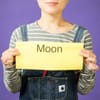Journey to the Seaside and honest back story of my work
What is the nature of making art? If it is not simply about fashioning forms and colours, then it has to do with the production of meaning…If you begin there you realize that potentially everything is material for art, because at some point it has to have an aspect of concretion and must be framed in relation to people’s lives.
Stuart Morgan, and Joseph Kosuth, ‘Art as Idea as Idea: An Interview with Joseph Kosuth’, Frieze, 6 May 1994 <https://frieze.com/article/art-idea-idea> [accessed 22 February 2020]
Yes, I love seaside. From my background, there should always be a reason why that content. but since I had a conversation with my loving friend,

What truly important is seeking what you really want. What feeling you want to present? How do you feel recently? What is your thinking about this bittersweet life? So, I decided to go to seaside again and make a video with it. I want to put that place name as secret because that would be only my place and intimate place of mine, where someday I would like to bring someone to show how I felt that times.



Honestly, I never used this Canon XA10(it was only one remained at uni’s resources store…,) I had no idea what kind of images I can get from it. I was afraid because it was a challenge with the unknown. The place where I’d planned to go, because I already been there, I knew what viewpoint I could get. But that new place was totally unknown, and I should believe my instinct (well that’s life babe.) It doesn’t matter how the image’s quality is high or best colour or not, it is still my image. I had a rough idea that I wanted to make, but real work starts when you really move your hands and begin to do something.
Honest Story
I love to make. It is an exciting experience that I’m actualise something that only existed in my imagination. Although I had a plan, it doesn’t mean that I know why I am doing right now, it can remain a lot of questions. Why sea wave? Why that composition? Why am I making this? Why is tactile or touching so important? After I finished editing, I tried to get the answer to this work; then I realised that I should go back to personal memory.
I remember that hand. No, I am thinking that hand right now. That moment, I didn’t see that hand, but by sense, I could see how it stroked my heart and my hand. I didn’t care in front of the street; how I worked, how was the sky, I just wanted to feel that hand. And I still can see it as if it is happening in front of me. As a third person, I can see in front of me. It is surprising how that small part of the body could create that much sensation. Each of my fingers, fingertips, between the fingers, touched another fingers, fingertips, between the fingers. I don’t remember surrounding, just fingers and warmth of the hand in the dark black hole. It hurt because there was an ending, I knew even that time, it will be end soon. But, no I am not sad because it finished, that long and the short moment has already distilled within my memory, became a violent wave, continuously crush my head and heart. The face faded away from my eyes, that skin scent evaporated from my nose, that warmth cooled in my heart, but that image of touch remained everywhere. It has extracted into the sense of eyes, as a looping memory, possess it as mine and possessed by it.
I never expressed how I felt at that time. Verbal communication is always hard to deliver. The simple words cannot show everything I want to say. I do not know even there was something between hand; I never asked about that moment. Perhaps I was afraid that if there was only one hand. Perhaps I was afraid as soon as I verbalised that memory it would vanish from the memory as if it was just my imagination, never happened in my life.
So, I made this video. I visualised that hand. Metaphorical wave crushes everywhere and touches your eyes from a distance. It never ends, or it ever moves. In the video, visual and sonic senses composed into the one image, but tactile. Is that intentional? Or just I couldn’t deliver the tactility of it?
It’s gone now. Remained only perhaps, maybe or never. But looping.

